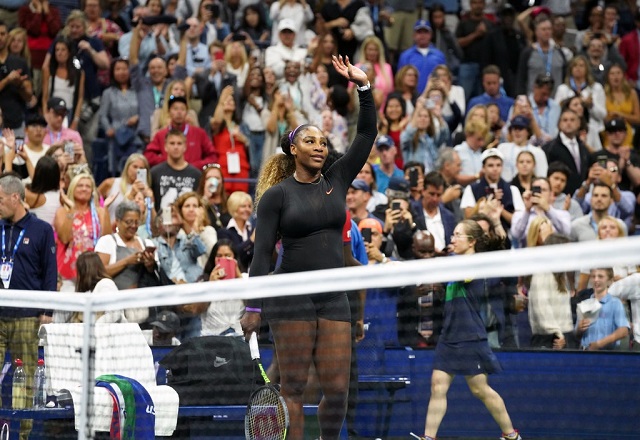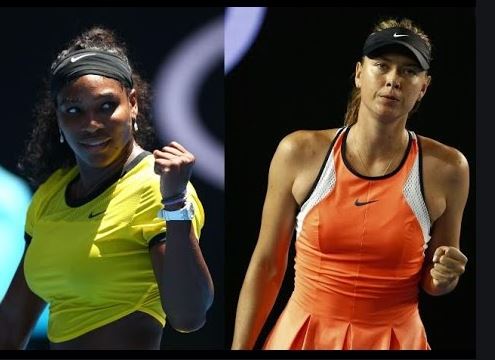Games
SHOW OF SUPREMACY– Serena Williams Outshine Maria Sharapova at The U.S. Open Tells Her You Are Not My Match: SEE FULL DETAILS…

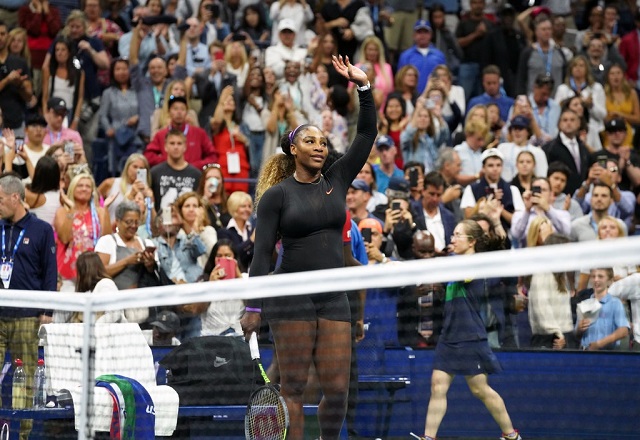
On the night Serena Williams returned to Arthur Ashe Stadium, scene of last year’s traumatic United States Open final, could there have been a more reassuring opponent than Maria Sharapova?
So much had changed in tennis and beyond since Williams last faced Sharapova, in January 2016.
But one thing clearly had not. Sharapova remains Williams’s most reliable tennis muse, bringing out the very best in Williams’s power game on a metronomic basis.
Their first-round match at the Open on Monday night was very much a throwback: Williams, as usual, crushed the suspense early by, as usual, timing her shots beautifully.
“I just feel like her game really matches up well against mine,” Williams said, sounding close to apologetic. “I always said her ball somehow lands in my strike zone. I don’t know. It’s just perfect for me.”

Serena Williams is a tacoholic
See What Queen Serena Williams Loves Eating After Winning Any Match — SEE PHOTOS INSIDE
This 6-1, 6-1 victory required just 59 minutes and was Williams’s 19th straight triumph over Sharapova, who has beaten Williams only twice in 22 meetings and not since 2004. They had never faced each other in the U.S. Open.
Monday’s dominant performance, one of Williams’s finest since she returned to the tour in March 2018 after giving birth to her first child, also opened up some intriguing possibilities for her in the near future.
If she can remain healthy and continue to strike the ball this well and remain this securely in the zone, Williams is likely to go very deep again at Flushing Meadows.
This 6-1, 6-1 victory required just 59 minutes and was Williams’s 19th straight triumph over Sharapova, who has beaten Williams only twice in 22 meetings and not since 2004. They had never faced each other in the U.S. Open.
US Open 2019: Serena Williams vs Maria Sharapova — Live Score and Latest Updates
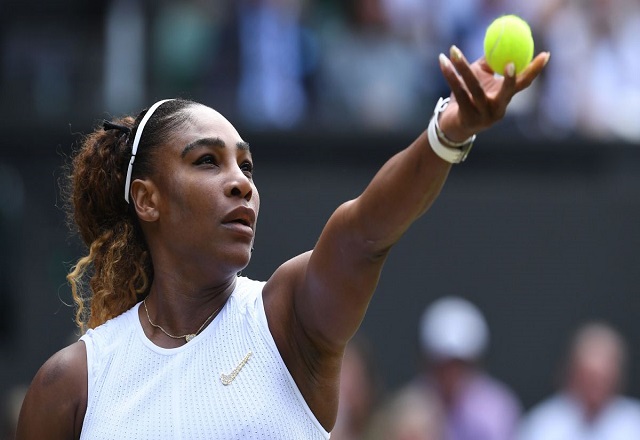
Monday’s dominant performance, one of Williams’s finest since she returned to the tour in March 2018 after giving birth to her first child, also opened up some intriguing possibilities for her in the near future.
If she can remain healthy and continue to strike the ball this well and remain this securely in the zone, Williams is likely to go very deep again at Flushing Meadows.
Movement has often been a problem for the 37-year-old Williams this year as she has struggled to compete because of injuries. Knee problems severely curtailed her play in the first five months of the season, and after reaching the final of the Rogers Cup earlier this month, she retired in the first set against Bianca Andreescu because of back pain.
But Williams soon resumed training, after deciding to skip her next scheduled event.
Her coach, Patrick Mouratoglou, confidently pronounced her fit for the Open, and Williams went out and proved it by serving convincingly and returning ferociously, saving five of the six break points she faced and converting all five of her break points. Sharapova also failed to win a single point on her second serve against Williams (she was 0 for 10).
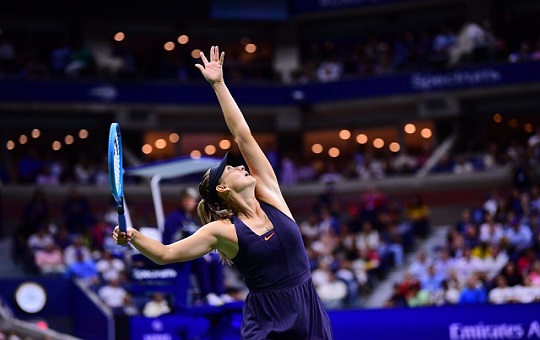
Sharapova, a former No. 1 and U.S. Open champion, served a 15-month suspension for a doping violation after testing positive for the recently banned substance meldonium at the 2016 Australian Open, which until Monday was the most recent where she had played Williams.
Sharapova returned to the tour in April 2017 but has failed to consistently hit the same high notes, experiencing numerous injuries of her own. At age 32, she is down to No. 87 in the rankings and was unseeded here, but she still sounds ready to keep chasing better days and results.

Serena Williams Net Worth: How Much Does The Tennis Player Make?
“Bottom line is I believe in my ability,” she said. “You can write me off. There are many people that can write me off, especially after going down 6-1, 6-1 in the first round of the U.S. Open. As long as it’s not the person that’s inside of you, you’ll be O.K.”
Williams’s dominant victory came on the same day that the U.S. Open unveiled a statue honoring Althea Gibson, one of Williams’s tennis role models and the first African-American player to win a singles title in this tournament.
“I think it sends a great message to me in particular, knowing her story, knowing c, what she went through,” Williams said of the statue, which is just outside Ashe Stadium. “It’s a different age and a different time. I read her book. I read about her having to sleep in cars because they wouldn’t allow her to be in the hotels. Even finding doubles partners was difficult for her. It’s just different times. It’s obviously hard to imagine being in that position, but it’s also really important to be thankful and to know what she went through.”
Williams went on, “No matter what color you are, you can definitely learn a lot about her story.”
You can learn plenty from Williams’s story, as well. Twenty years ago, she won her first Grand Slam singles title at the U.S. Open. She has won five more at Flushing Meadows but also experienced plenty of mixed emotions here.
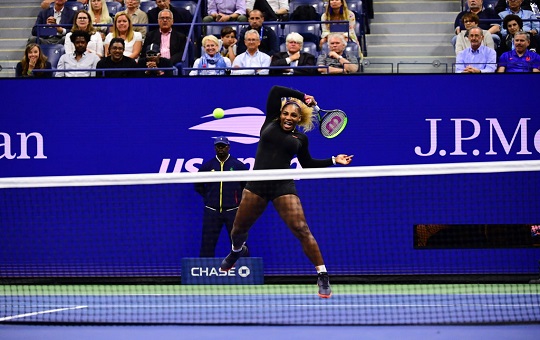
Last year’s final against Naomi Osaka was perhaps her most distressing moment at the Open as she clashed with the chair umpire, Carlos Ramos, who called her for three code-of-conduct violations, penalizing her a point and then a game in her straight-sets loss.
Osaka, in what should have been a celebratory moment, ended up in tears at the awards ceremony as the crowd booed and jeered the umpiring and the result.
Ramos is back as a chair umpire at the Open, but tournament organizers have said they will not assign him to any of Williams’s matches this year, in an attempt to avoid creating a distraction.
Williams was asked for her reaction to that policy. “Yeah, I don’t know who that is,” she responded, referring disingenuously to Ramos.
What is undeniable is that 50 weeks later, there was nothing resembling a meltdown. Williams was greeted with loud applause as she walked into the packed stadium with her headphones and her game face firmly in place.
As she warmed up, a young woman posed courtside for photos wearing a T-shirt with the inscription: “I don’t cheat to win. I’d rather lose.” That was what Williams said to Ramos after he penalized her for receiving illegal coaching after spotting her coach, Patrick Mouratoglou, making hand signals in the stands.
Mouratoglou, back in the box on Monday night, kept his arms folded for most of this match, and the eighth-seeded Williams never seemed remotely in need of outside intervention to close out this victory.
But then nobody seems to inspire her quite like Sharapova. Next challenge in the second round: the 17-year-old American Caty McNally.

